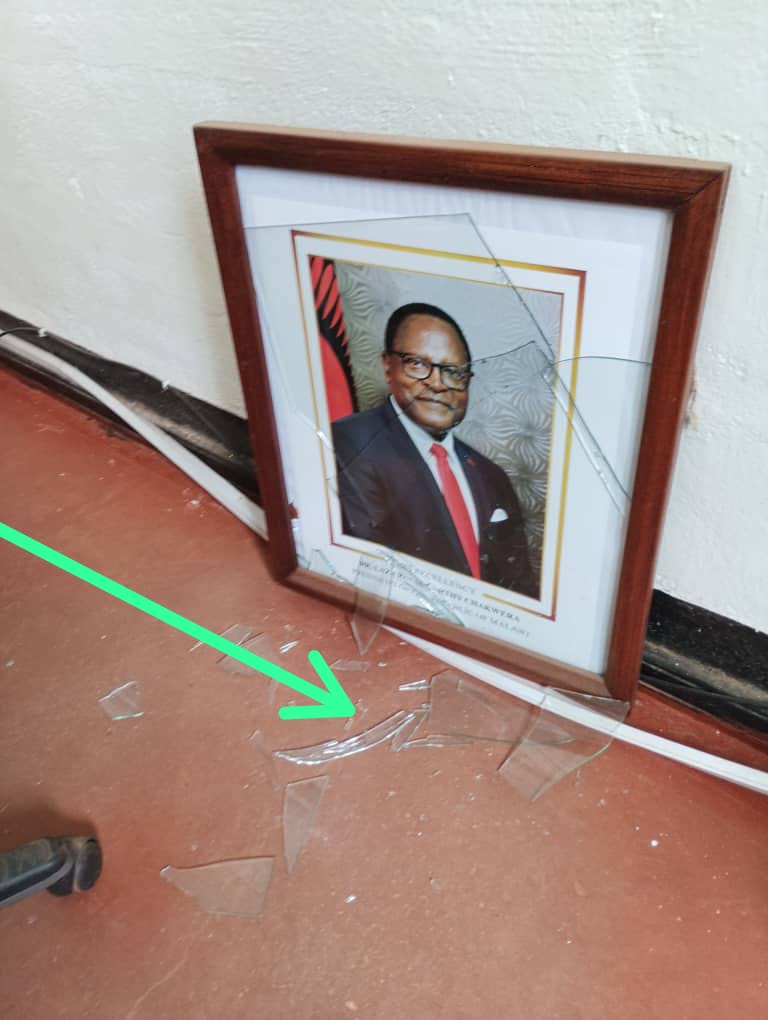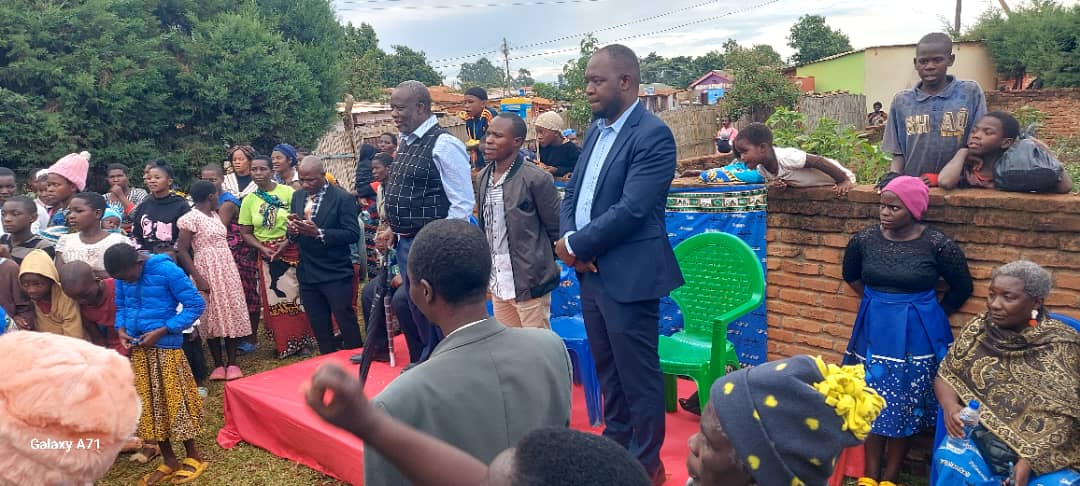By Twink Jones Gadama
In the annals of political history, the symbolism of omens has often played a pivotal role in shaping the destinies of leaders and their governments. The recent incident involving President Lazarus Chakwera’s portrait falling at Capital Hill has ignited a flurry of interpretations, with many viewing it as a harbinger of doom for his administration. This event, reminiscent of the biblical tale of King Nebuchadnezzar, serves as a poignant reminder of the precarious nature of political power and the potential consequences of governance that strays from the will of the people.
The fall of Chakwera’s portrait is not merely a physical occurrence; it is laden with symbolic significance. In many cultures, the act of a leader’s image falling is interpreted as a sign of impending failure or loss of authority. For Chakwera, who ascended to the presidency with promises of reform and a new direction for Malawi, this incident could be seen as a manifestation of the discontent brewing among the populace. The portrait, a representation of his leadership, crashing to the ground may well reflect the crumbling support for his government.
The biblical narrative of Nebuchadnezzar, the Babylonian king who experienced a dramatic fall from grace, offers a compelling parallel to Chakwera’s current predicament. In the Book of Daniel, Nebuchadnezzar is warned by a mysterious hand that writes “Mene, Mene, Tekel, Upharsin,” a message foretelling the end of his reign due to his hubris and failure to acknowledge the sovereignty of God. This divine warning serves as a critical turning point in the king’s life, leading to his eventual madness and exile. Similarly, Chakwera’s government has faced mounting criticism for its perceived failures, including economic mismanagement, corruption, and a lack of transparency. The portrait’s fall can be interpreted as a modern-day echo of Nebuchadnezzar’s warning, suggesting that Chakwera must heed the signs of discontent or risk facing a similar fate.
The phrase “Mene, Mene, Tekel, Upharsin” translates to “Numbered, Numbered, Weighed, and Divided,” indicating that a ruler’s days are numbered, their actions weighed, and their kingdom divided. In the context of Chakwera’s administration, one could argue that the government has been “weighed” and found wanting. The promises made during his campaign have not materialized, leading to widespread disillusionment among the electorate. The economic challenges facing Malawi, exacerbated by the COVID-19 pandemic and global economic shifts, have further strained the government’s credibility. As citizens grapple with rising prices, unemployment, and inadequate public services, the fall of Chakwera’s portrait serves as a stark reminder of the disconnect between the government and the governed.
Moreover, the political landscape in Malawi has been characterized by a growing sense of division. Chakwera’s administration has struggled to unite the various factions within the ruling party and the broader political spectrum. The infighting and power struggles have weakened the government’s ability to effectively address the pressing issues facing the nation. Just as Nebuchadnezzar’s kingdom was ultimately divided, Chakwera’s government risks fracturing under the weight of internal discord and public dissatisfaction.
The symbolism of the portrait’s fall extends beyond the immediate implications for Chakwera’s presidency. It also raises questions about the nature of leadership and the responsibilities that come with it. Leaders are often seen as embodiments of their nations, and their actions can have profound effects on the collective psyche of the populace. When a leader’s image is tarnished, it can lead to a loss of faith in the entire system of governance. The fall of Chakwera’s portrait may thus signify a broader crisis of confidence in Malawi’s political institutions.
In the wake of this incident, it is essential to consider the potential ramifications for Chakwera’s administration. The symbolism of the portrait’s fall may galvanize opposition forces, emboldening them to challenge the government’s legitimacy and call for accountability. The political landscape in Malawi is already fraught with tension, and this event could serve as a catalyst for increased activism and dissent. Just as Nebuchadnezzar’s downfall ultimately led to the rise of new leaders and a shift in power dynamics, Chakwera’s portrait falling may signal the beginning of a new chapter in Malawi’s political narrative.
Furthermore, the role of the media and public discourse cannot be overlooked in this context. The interpretation of the portrait’s fall as an omen has already gained traction in social media and public conversations. The power of narrative in shaping public perception is undeniable, and the framing of this incident as a sign of impending doom for Chakwera could influence the trajectory of his presidency. The media’s portrayal of the event will play a crucial role in determining whether it becomes a rallying point for opposition forces or a moment of reflection for the ruling party.
In conclusion, the fall of President Lazarus Chakwera’s portrait at Capital Hill serves as a powerful symbol of the challenges facing his administration. Drawing parallels to the biblical story of Nebuchadnezzar, this incident highlights the precarious nature of political power and the consequences of failing to heed the signs of discontent. As Chakwera navigates the turbulent waters of governance, he must confront the reality that his days may indeed be numbered if he does not address the pressing issues facing Malawi. The portrait’s fall is not merely a physical event; it is a clarion call for introspection, accountability, and a renewed commitment to the principles of good governance. The question remains: will Chakwera rise to the occasion, or will he succumb to the fate that history has often reserved for leaders who ignore the warnings of their time?




